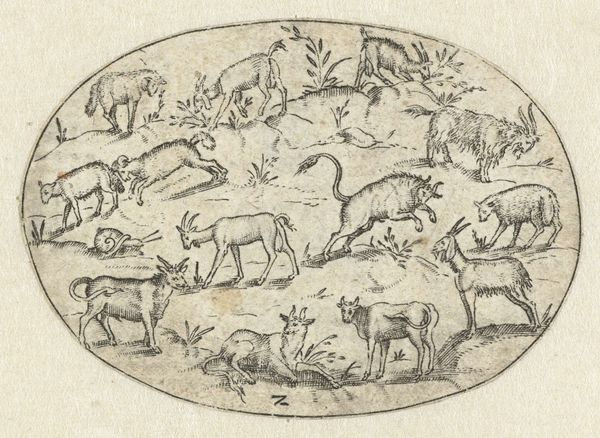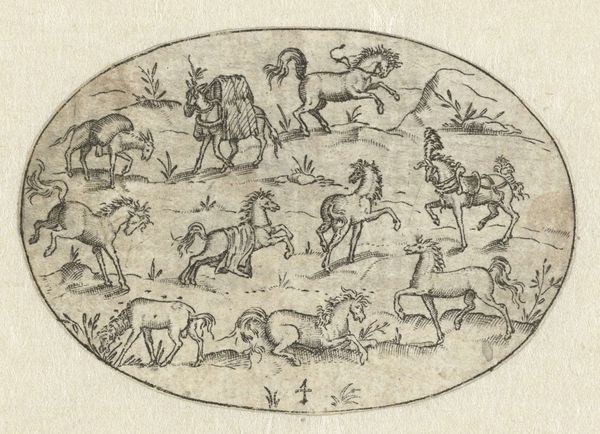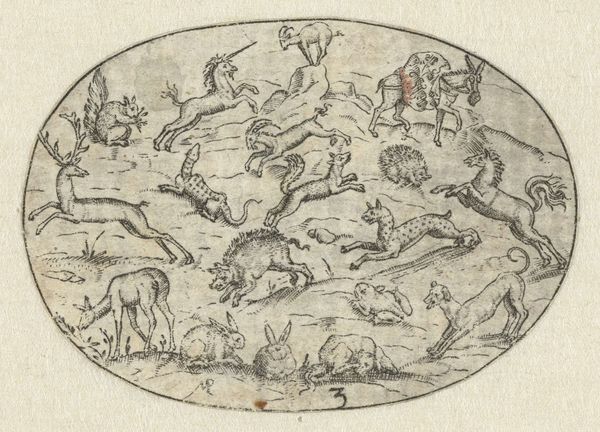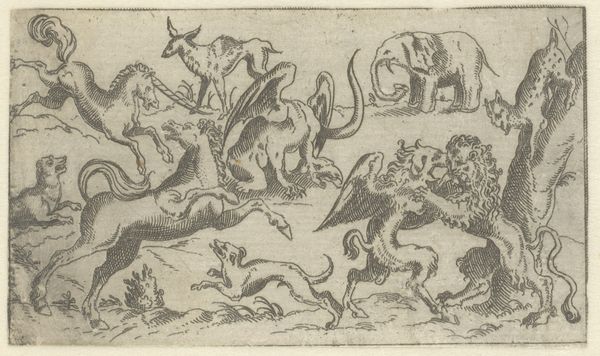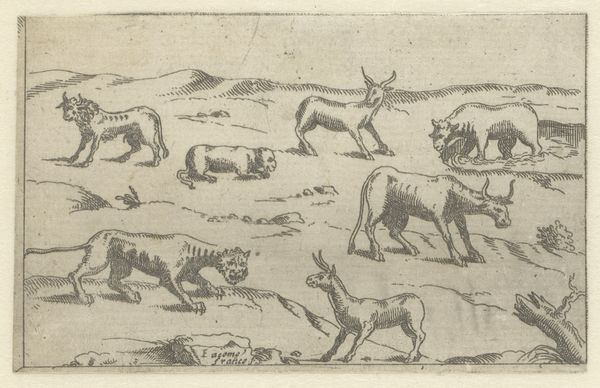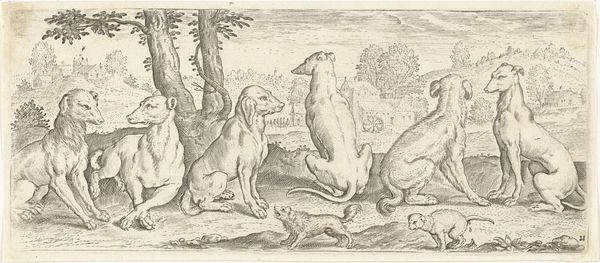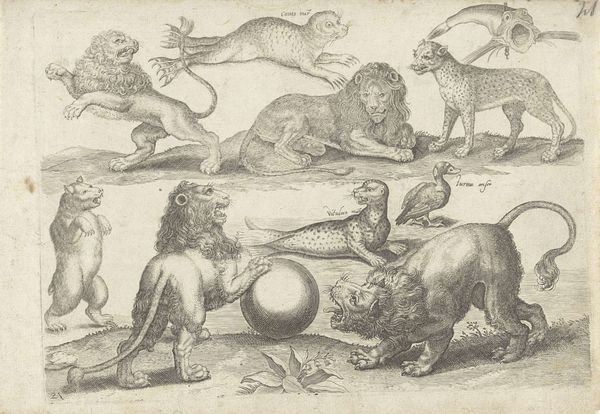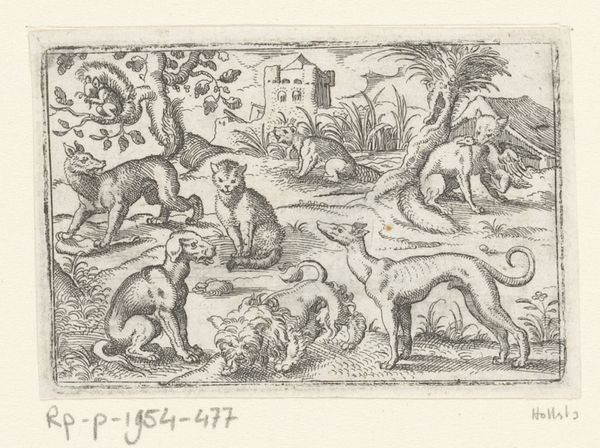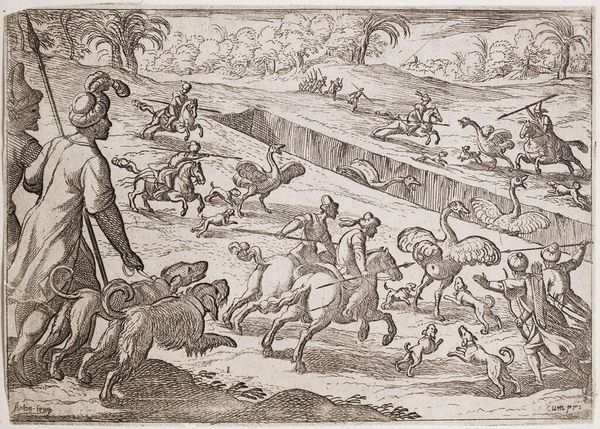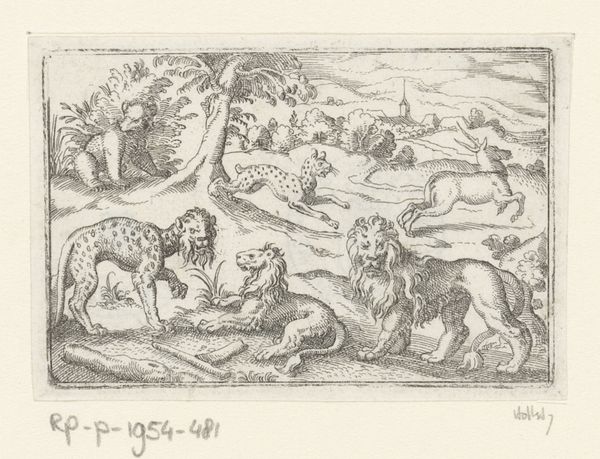
print, engraving
#
pen drawing
# print
#
pen illustration
#
figuration
#
11_renaissance
#
line
#
genre-painting
#
northern-renaissance
#
engraving
#
miniature
Dimensions: height 43 mm, width 62 mm
Copyright: Rijks Museum: Open Domain
Curator: Here we have "Ovaal met veertien dieren," or "Oval with Fourteen Animals," an engraving made in 1594 by Martin Pleginck. The scene depicts a variety of animals in an oval composition. Editor: It feels immediately whimsical, almost dreamlike. The animals have this anthropomorphic quality that’s very captivating. It's quite small, isn't it? Almost a miniature world captured on paper. Curator: Yes, engravings of this era often played with scale and detail. Pleginck was part of a printmaking culture that disseminated imagery widely. The Northern Renaissance loved these kinds of fantastical menageries. They spoke to the public’s growing fascination with the natural world, albeit filtered through imagination. Editor: What strikes me is the symbolism. Look at how each animal is engaged in distinct activity—playing musical instruments, foraging, and in what context were animals portrayed like this back then? Curator: Ah, that is up to scholarly interpretation, as Martin Pleginck lived and worked in the middle of the European Renaissance! During the rise of natural philosophy, artists tried to put visual form on human perceptions of the world, and use artistic composition to categorize and catalog them. Animal attributes were imbued with moral meaning as they featured heavily in popular allegories, fables and bestiaries during this time. This work can be considered, in a broader context, to be reflecting human nature through the mirror of the animal world. The printing press was quite important in allowing more and more people to think in allegorical forms! Editor: So these weren't just pictures of animals, they were carriers of messages? Fascinating how even in seemingly innocent depictions, the Renaissance mind was deeply concerned with deeper truths. Curator: Precisely. The power of print wasn't merely aesthetic; it served as a conduit for humanist thought. The animal world, presented in engravings such as this one, often alluded to socio-political circumstances. Consider the role of courtly entertainments at the time – the very same animals that adorned menageries found their place in public dramas, staged ballets, and even festivals as personifications. They entertained AND instructed! Editor: A delightful and thought-provoking print; the oval composition lends it a sense of enclosure, almost like peering into another world, perhaps even an introspective, internal one. Curator: Agreed; the power of prints lay in their ability to condense the complex workings of society into accessible imagery, ensuring the survival of the artist’s vision long after it left the artist's hands.
Comments
No comments
Be the first to comment and join the conversation on the ultimate creative platform.
